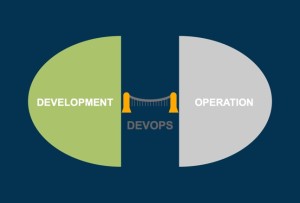A DevOps strategy for effective software delivery is needed to accelerate time to deliver software to meet the market demand for agility. This post is about achieving this strategy.
DevOps Strategy for Effective Software Delivery
Today, software has become central and fundamental to the business. However developing software that meets business needs became very challenging due to complex requirements for new and legacy software. The scope and capabilities required for the software has increased significantly in recent years requiring the integration of many components magnifying the software development complexity.
To add to this complexity, the task for deploying software into production has been historically the function of the operation team. Traditionally, there was a clear line between development and operations. The development team wrote code and created applications. The operation team relied on the development team to provide them clear and complete instructions on how to deploy the software. Along with these instructions, operations collected information for carrying out subsequent activities for deploying the software to determine the resources required to operate the software in production. They built, packaged, and deployed the applications into production. Furthermore, due to a combination of conflicting motivations, processes and tools, the handoffs from development to operation was never smooth resulting in lengthy software deployment full of frustration with imminent risks for failure. New software releases were frequently delayed and these challenges were major inhibitors for achieving agile software delivery pipelines.
The need for new strategies for streamlining a team’s ability to produce software and improving collaboration across the development and operation lifecycle. The DevOps strategy must incorporate people, process, information and tools to drive for better software delivery. It must incorporate the coordination of software development and software deployment activities. It should consist of the core disciplines of requirements management, development, build, test, and software deployment that must all be planned by project management and orchestrated by using a unified process.
It must incorporate an integrated suite of tools, which provides orchestration for every part of the software delivery lifecycle from requirements through deployment. The integrated suite of tools must cater for agile and traditional methods and enable teams to work together efficiently to produce software.
To lower the integration barriers with other tool providers including open source, the DevOps strategy must be based on an open architecture with a uniform set of protocols and specifications based on open standard technologies.
The DevOps strategy must have the ability to drive innovation at scale. It must provide an enterprise capability for continuous development, continuous testing and continuous software delivery. It must address the integration of traditional IT environments with one or more clouds, local, private and public. It should be able to eliminate wasted effort, breaking down artificial barriers between related functional teams, and adopting continuous release cycles that push improvements out to users faster than ever before.
About the Author
 Sami Joueidi holds a Masters degree in Electrical Engineering and an Enterprise Architecture certification from Carnegie Mellon. He has over 20 years of experience as a technical leader of complex IT projects for Fortune 500 firms, in diverse roles such as Systems Integrator, DevOps, Cloud Architecture, Enterprise Architecture and Software Development & Release Management. He guides customers on how to leverage the latest technology trends to their advantage and helps them with their Cloud adoption strategies.
Sami Joueidi holds a Masters degree in Electrical Engineering and an Enterprise Architecture certification from Carnegie Mellon. He has over 20 years of experience as a technical leader of complex IT projects for Fortune 500 firms, in diverse roles such as Systems Integrator, DevOps, Cloud Architecture, Enterprise Architecture and Software Development & Release Management. He guides customers on how to leverage the latest technology trends to their advantage and helps them with their Cloud adoption strategies.
© Sami Joueidi and www.cafesami.com, 2015. Excerpts and links may be used, provided that full and clear credit is given to Sami Joueidi and www.cafesami.com with appropriate and specific direction to the original content.


Do you like to comment?